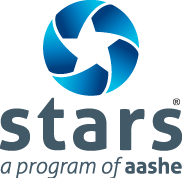Log in with your AASHE Account
Accessing certain content within the STARS website requires a login with an AASHE Account. Credit-detail pages from published STARS reports are available to anyone with an AASHE Account. Content displays on the other hand are accessible to only accounts associated with an AASHE member organization. To contribute to an institution's STARS report, you must by listed as an authorized user by an institution's STARS Liaison.
Forgot your password?
No worries, click here to reset your password.
Don't have an AASHE account?
Create one now.
Not affiliated with a participating institution?
Learn more about getting started with STARS. If your institution is already registered, ask your institution's STARS Liaison about access or email stars@aashe.org.
If you are a student or researcher who is not affiliated with a participating institution, you can also request temporary access to STARS data.
